Während die Bewertung Ihnen sagt, wie gut ein Buch nach unseren beiden Kernkriterien ist, sagt es nichts über seine besonderen Merkmale aus. Daher verwenden wir einen Satz von 20 Qualitäten, um jedes Buch anhand seiner Stärken zu charakterisieren:
Umsetzbar – Sie erhalten praktischen Rat, den Sie unmittelbar in Ihrem Beruf oder im Alltag anwenden können.
Analytisch – Sie erfahren etwas über die tieferen Zusammenhänge eines Gegenstandes.
Hintergrund – Sie erhalten kontextuelle Informationen als Fundament für Ihre Handlungen oder Analysen.
Meinungsstark – Sie lesen einen Autor, der keine Angst hat, etablierte Ansichten zu hinterfragen.
Umfassend – Sie finden jeden Aspekt des Themas behandelt.
Praktische Beispiele – Sie erhalten praktischen Rat, der durch reale Anwendungsbeispiele veranschaulicht wird.
Kontrovers – Sie werden mit stark diskutierten Meinungen zu einem Thema konfrontiert.
Eloquent – Sie kommen in den Genuss eines meisterhaft präsentierten Textes.
Unterhaltsam – Dieser Text fesselt Ihre Aufmerksamkeit.
Augenöffner – Sie erhalten unerwartete Einblicke.
Für Einsteiger – Sie finden mithilfe dieses Textes einen leichten Einstieg ins Thema.
Für Experten – Sie erhalten vertiefende Informationen oder Anleitungen.
Brisant – Der Text behandelt ein brisantes, aktuelles Thema.
Innovativ – Hier finden Sie wahrhaft neue Ideen und Ansätze sowie Beschreibungen brandneuer Produkte oder heißer Trends.
Insiderwissen – Hier erwarten Sie exklusive Informationen aus erster Hand.
Inspirierend – Sie werden das Gelesene gleich in die Tat umsetzen wollen.
Überblick – Hier finden Sie die wichtigsten Informationen zu einem Thema.
Wissenschaftsbasiert – Die Lehren oder Einsichten des Buches gründen auf aktuellen Forschungsergebnissen.
Visionär – Sie erfahren, was die Zukunft für Sie bereithalten könnte.
Systematisch – Der Inhalt des Buches ist dank einer sinnvoll strukturierten Aufbereitung besonders leicht anzuwenden oder zu verstehen.
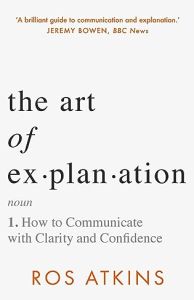









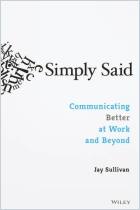
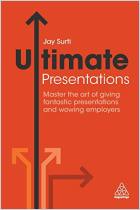
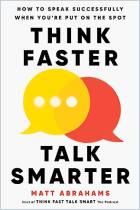
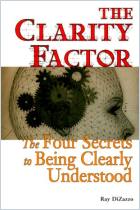

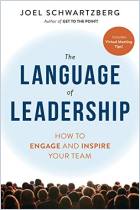








Comment on this summary
If you've ever struggled to make complicated thoughts, products, or offerings smooth for others to understand, "The Art of Explanation" through Lee LeFever is a need to-read. This book is an vital guide for each person looking to improve their conversation abilities, specially in making complicated subjects handy and tasty.
LeFever, the founder of Common Craft, stocks his know-how in developing clear and compelling causes. This e-book is in particular treasured for experts in education, advertising, enterprise, and generation who frequently want to deliver complex information to numerous audiences.
**Key motives to advocate this e book consist of:**
1. **Clear Framework**: LeFever introduces the "Explanation Scale" and the "Explanation Lifecycle," presenting a structured approach to crafting effective motives.
2. **Engaging Examples**: The ebook is full of actual-global examples and case studies that illustrate how powerful causes can rework information and engagement.
Three. **Practical Techniques**: LeFever gives actionable strategies for breaking down complicated thoughts, the use of analogies, storytelling, and visual aids to make records greater digestible.
4. **Focus on Audience**: The ebook emphasizes the significance of know-how your target audience's wishes, information stage, and attitude, ensuring your factors are tailored and applicable.
5. **Visual Communication**: As a pioneer in the use of explainer films, LeFever stocks insights on leveraging visuals to enhance information and retention.
6. **Improving Clarity**: The e-book gives strategies to simplify language, take away jargon, and make clear key messages, making your conversation extra powerful.
**Who Should Read This Book:**
- **Educators**: Teachers, trainers, and instructional designers trying to decorate their coaching methods and materials.
- **Marketers**: Professionals who want to communicate the value of services and products to ability clients.
- **Business Leaders**: Executives and bosses who should provide an explanation for strategies, methods, and modifications inside their businesses.
- **Tech Professionals**: Developers, engineers, and product managers who want to make technical records available to non-technical audiences.
- **Content Creators**: Writers, video producers, and designers who create instructional or informational content material.
**Key Takeaways:**
- **Understand Your Audience**: Tailor your motives to the expertise level and pastimes of your audience.
- **Simplify and Clarify**: Use easy language, analogies, and visuals to make complex ideas more accessible.
- **Engage Through Storytelling**: Incorporate tales and relatable examples to make your motives extra engaging and memorable.
**Conclusion:**
Lee LeFever's "The Art of Explanation" is a incredibly endorsed useful resource for all and sundry seeking to enhance their capacity to explain complex ideas correctly. By following LeFever's ideas and techniques, you may enhance your conversation skills, making your thoughts, merchandise, and services less complicated to understand and more compelling in your target audience.